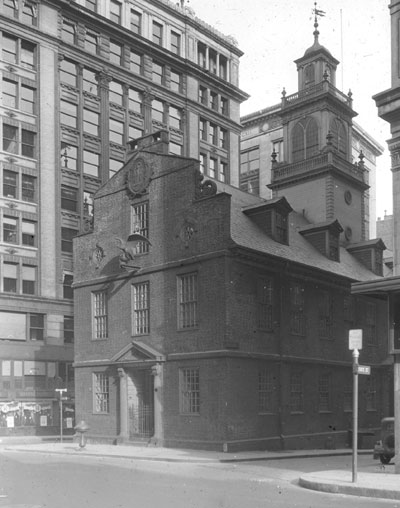
The Old State House in Boston, Massachusetts, stands as a symbol of American history, witnessing pivotal moments from colonial times to the present day. Its evolution reflects the changing landscape of Boston and the enduring legacy of the American Revolution.
Historical Significance

Built in 1713, the Old State House is one of the oldest public buildings in the United States. It served as the seat of the Massachusetts General Court until 1798. This historic building played a central role in the American Revolution, being the site where the Declaration of Independence was first read to Bostonians from its balcony on July 18, 1776. Additionally, the Boston Massacre occurred just outside its doors on March 5, 1770, marking a significant escalation in tensions between the American colonists and British soldiers.
Architectural Evolution

The Old State House’s architecture is a fine example of Georgian style, characterized by its red brick facade, white trim, and symmetrical design. Over the centuries, the building has undergone several renovations to preserve its structural integrity and historical authenticity. Despite these changes, the building retains much of its original charm and continues to be a prominent landmark in downtown Boston.

Preservation and Modern Use
Today, the Old State House is a museum managed by the Bostonian Society, dedicated to preserving and interpreting Boston’s revolutionary history. Visitors can explore exhibits that delve into the events leading up to the American Revolution, including artifacts, documents, and interactive displays. The museum offers guided tours that provide in-depth insights into the building’s history and its significance in American history.
The Old State House in Modern Boston
Surrounded by modern skyscrapers, the Old State House stands as a striking contrast to the contemporary cityscape. This juxtaposition highlights Boston’s unique blend of historic preservation and urban development. The building’s central location makes it easily accessible to tourists and locals alike, serving as a reminder of the city’s rich heritage amidst the hustle and bustle of modern life.
Conclusion
The Old State House in Boston, Massachusetts, is more than just a historic building; it is a testament to the city’s and the nation’s journey through time. From its role in the American Revolution to its current status as a museum, the Old State House continues to educate and inspire visitors. Its preservation allows future generations to connect with the past, understanding the roots of American independence and the enduring spirit of Boston.
4o





